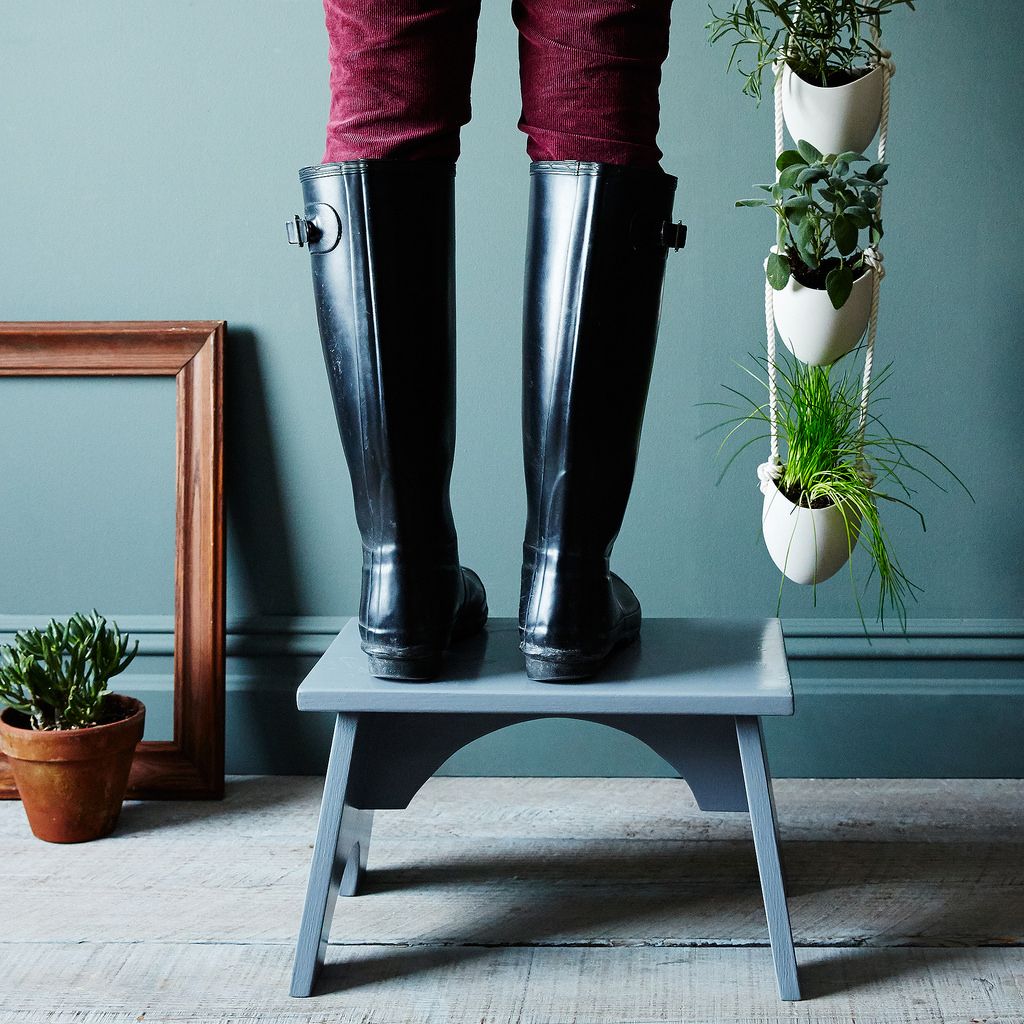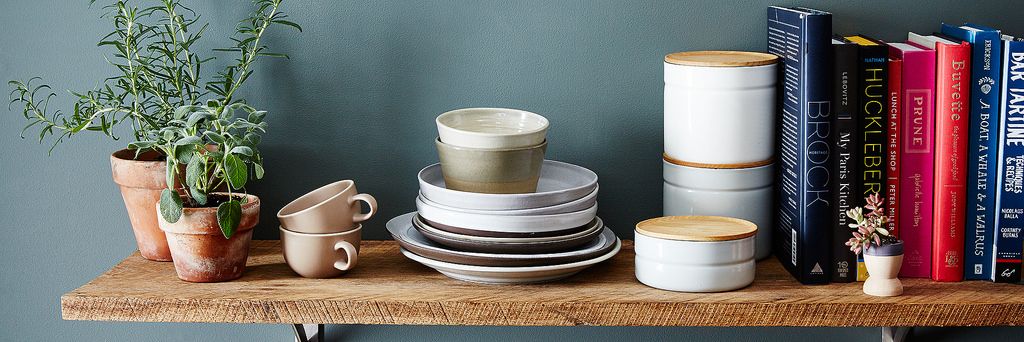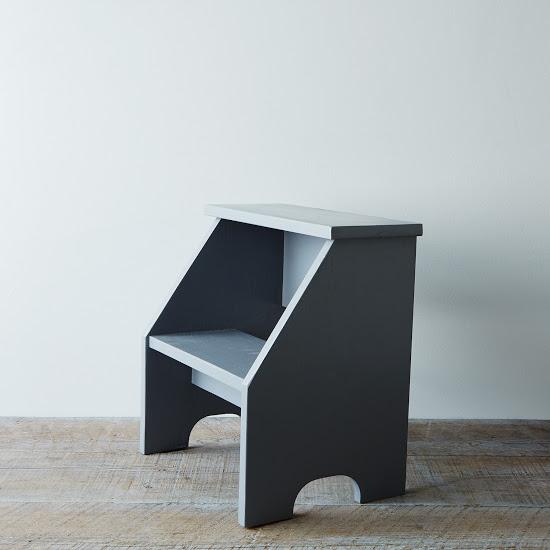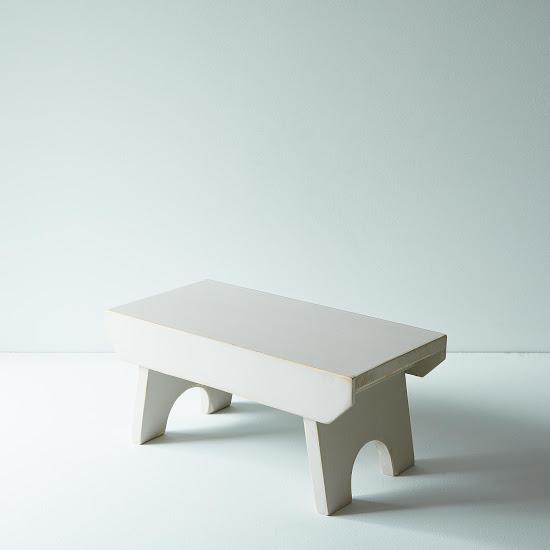Profiles
Meet John and Brenda, Makers of Step Stools and Vertical Storage Savants
We choose products for the Food52 shop not only because we're obsessed with them (always) -- most of the time we're just as inspired by the creatives who make them. And we listen up when those makers share their own insight and tips for smarter living.
Today: Enter John and Brenda Wahl, who hand-craft the beautiful step stools we sell in our shop (some in exclusive Food52 gray). They keep three of them in their own home and recently gave us the low-down on strategic vertical storage.

Located on a few lush acres in the wilderness of Washington state, John and Brenda Wahl have built a thriving business by selling handmade tools for practical, stylish living. The company they started in 2009, Circle Creek Home, operates out of their own house, where they make all-natural olive oil soaps, small-batch body butters, beeswax hand salves, and lip balms -- not to mention hardy, refined step stools in 5 different designs.
As the Wahls tell it, you cannot put a step stool in a box -- or a cabinet, closet, or drawer, for that matter. They are fresh air creatures that need to be out and about and used regularly to be truly helpful. Read on for John and Brenda's story and more tips about getting the most out of these pretty risers.
Why did you start building step stools?
We’d just built our home with 8-foot cabinets, and we started looking for step stools to reach them. We found all kinds (and step ladders everywhere), but nothing looked good enough to keep out all the time. When we finally located some wooden ones that we loved at a vintage store, our friends and family all wanted some for their own homes and for their kids to reach the sink. We decided to try making a few, and from there it just escalated -- more and more people were requesting them!
Clearly, there was demand for a step stool that looked good and was also well-built, so we eventually opened up an online shop and started working towards making Circle Creek Home our full-time job. We live on 16 acres in Snohomish, Washington with the Pilchuck Creek circling around us, which is how we came up with the name.
Did you have any prior experience woodworking?
We started our business in 2009 while still working full-time corporate jobs in the title and escrow industry. We wanted to spend more time together, and also more time at home instead of being in an office for 10 to 12 hours a day. John had worked for a builder before and we built our own home in 1997, so we were both very familiar with all kinds of tools.
We basically worked two jobs each for about two years until Circle Creek Home gained momentum and we become self-sufficient in 2011, which for us meant producing our own income from home every month -- so we could (finally!) quit our corporate jobs.
How many stools do you make in a day?
On average we produce about ten step stools every day; 100 bars of our handmade soap; we manage and fill our wholesale accounts; and we also stock our retail space. We work half days from 6 in the morning to 6 at night. Now six years after opening Circle Creek Home, we produce hundred of step stools every month and they're shipped world-wide. We love running a home business.
That's the longest half-day we've ever heard of.
No kidding!

Why is it so important to keep a step stool out instead of stored away?
A step stool has to be out all the time because if you can’t access high storage spaces regularly you just won’t use them. If you must drag over a chair or unfold a stepladder or jump on the counter (we've all done it!), you aren't going to access whatever's stored away. You won’t even know what’s up there and what’s getting old.
The majority of households (as much as 80%!) don’t use upper shelves effectively, and their lower cabinets feel cluttered. The key to making the most of your storage is to reach high places quickly, easily, and efficiently. If you're building, shelves should be from 4 1/2 to 7 feet off the ground, so heavy appliances are never too far from the counter.
Do you have any advice for smarter vertical kitchen storage?
First of all, high storage is often available even when you don't have open shelving. If there’s space above your cabinets or on top of the fridge, use it for storage. A nice set of bins will help in tucking small items away up there. And clean your wall storage out annually: If you haven’t used something in a year, pack it up and take it to the thrift store.
High shelves should be a place for lightweight, less-frequently used items like Champagne flutes, cake stands, holiday china, and serving pieces. Low shelves should house your everyday items including plates, bowls, mugs, and cups that you want to reach without stepping up at all. Keep perishables down low, since heat rises and can spoil preserves like pickles stored on the top shelf.
If your shelves are open or you have glass doors on your cabinets, fill in the gaps between kitchen goods with pieces from a collection, framed art, or plants on the lowest shelves. Bring elements of your own style into the kitchen space, so it's a place you want to be.

What are some uses for a step stool besides just in the kitchen?
Oh, anywhere! We find that people use them in the pantry, bathroom, laundry room, garage, and in the bedroom to step up into a high bed or to reach up into a walk-in closet. They are very versatile and especially great for kids who often need a step up, whether for brushing their teeth or helping with dinner.
Any advice for others starting a small business?
The biggest reason people do not succeed is they give up too soon. Don't give up; just keep working toward your goal!
Photos by James Ransom



See what other Food52 readers are saying.